Razor-sharp memories might recall my (mis)adventures in Nantou’s Ancient City. The first going back to Chinese New Year 2024, referenced in my article about our October 2024 National Holiday day out that was cut short by the “city” basically being on snooze mode. We vowed to return, and return we have!
The Guandi Temple is the aim of today’s expedition. There are many temples dedicated to Guan Yu (and Friends) in China. His epic stories and heroic personality make him universally respected. He has his own temples in many places, and his fame is shared by all the major belief systems.
He could hardly be more celebrated. During his life a general, then a marquis, a king, and even an emperor. Finally in death, a saint. Buddhism, Confucianism, and Daoism, all worship him in order as “Galan Bodhisattva”, “God of wealth”, and “God of Wealth and War”. He is a martial saint. Worshipping him brings good luck, avoidance of misfortune, the turning of misfortune into good fortune, the gathering of wealth and the making of your wishes true.
Deep breath.
This epic statue that defines a new level of “going hard” is the work of Li Sui, an Associate Professor of the Sculpture Department of Lu Xun Academy of Fine Arts, and a host of other titles and accolades. See Guan Yu with his lance and his rearing steed, and you can see why men want to be him, and women want to be with him.
The beautifully simple murals that frame the entry and exit depict major events in the story of the Three Kingdoms. The graphic, stylized violence is shocking and playful all at once.
The Romance of the Three Kingdoms begins with the collapse of the Han dynasty into three warring kingdoms and the eventual consolidation into the Jin Dynasty. There are so many personalities and conflicts, a rich tale of battles, strategy, and counter strategy. Characters experience sudden victories and crushing defeats, drawing in readers for 1700 years.
I enjoyed the expressions on the characters. In battle, grim and stoic determination. In death, eyes closed and at peace. But the horses! For some reason the artist chose to depict every horse with an expression that says, “Did you SEE that!?! His head came off! How did I get here!!”
The temple itself is small and personal. Beyond the short entryway with the murals is merely this compact courtyard and a handful of steps to the shallow temple housing the statue of Guan Yu. A canopy of swaying branches shades the courtyard, filtering the smoke from the incense. This is a very relaxed setting.
The pivotal event of The Romance of the Three Kingdoms is the chance meeting of Guan Yu (below, center), Liu Bei (left), and Zhang Fei (right) in a peach orchard. They became brothers and pledged to protect the dynasty and the emperor, and support each other. The majority of the story is the adventures, misfortunes, triumphs, and losses each suffered. I will not be spoiling their stories!
Liu Bei (left) is noble, honest to his friends and popular. He was known for attracting great advisors and being a benevolent ruler. Zhang Fei (right) was so different it is a wonder they were so close, and yet they would truly have given their lives for each other. Zhang Fei was brash, stubborn, quick to anger and prone to wild mood swings. A great warrior, arguably the toughest of these three in a fight. Guan Yu is level-headed, loyal, and righteous to a fault. His bravery and prowess in military manoeuvres and battle made him an attractive leader.
He Zhonglin, who also taught at the Lu Xun Fine Arts Academy for 17 years, and Li Xiangqun, a former president of the Academy, created these sculptures. I am a bit unsure who made which one, so don’t quote me. These are more representations of Zhang Fei and Liu Bei flanking the entrance to Guan Yu’s temple, where his statue resides.
And there he is seated inside, striking another epic pose. Very cool.
Guan Yu and the Warring States Period reminds me of my favorite author Robert E. Howard and his creation, Conan the Barbarian. His fictional Hyborian Age could have been inspired in part by this period, and Conan modelled after a more real hero known for this martial prowess and living by his own code, Guan Yu.
There is no place eliciting donations. I only realized after leaving. No shop either, which is a bit regretful. I like a good shop. No matter, we will visit more shrines erected to Guan Yu and Friends. We’ll get our fridge magnet.
One last appreciation, for the “history” room that this very small temple took care to include on the grounds. Not much bigger than a broom closet, but well organized. Much appreciated. Not all places do this! There are many ways to show pride and many individuals and organizations contribute to maintaining, designing, and beautifying these historical sites. I like to see the names given recognition.
I have read The Three Kingdoms years ago. The book occupies a prized place on my bookshelf, but I should return to it with fresh eyes and see how these last few years of exploring have enriched the experience.





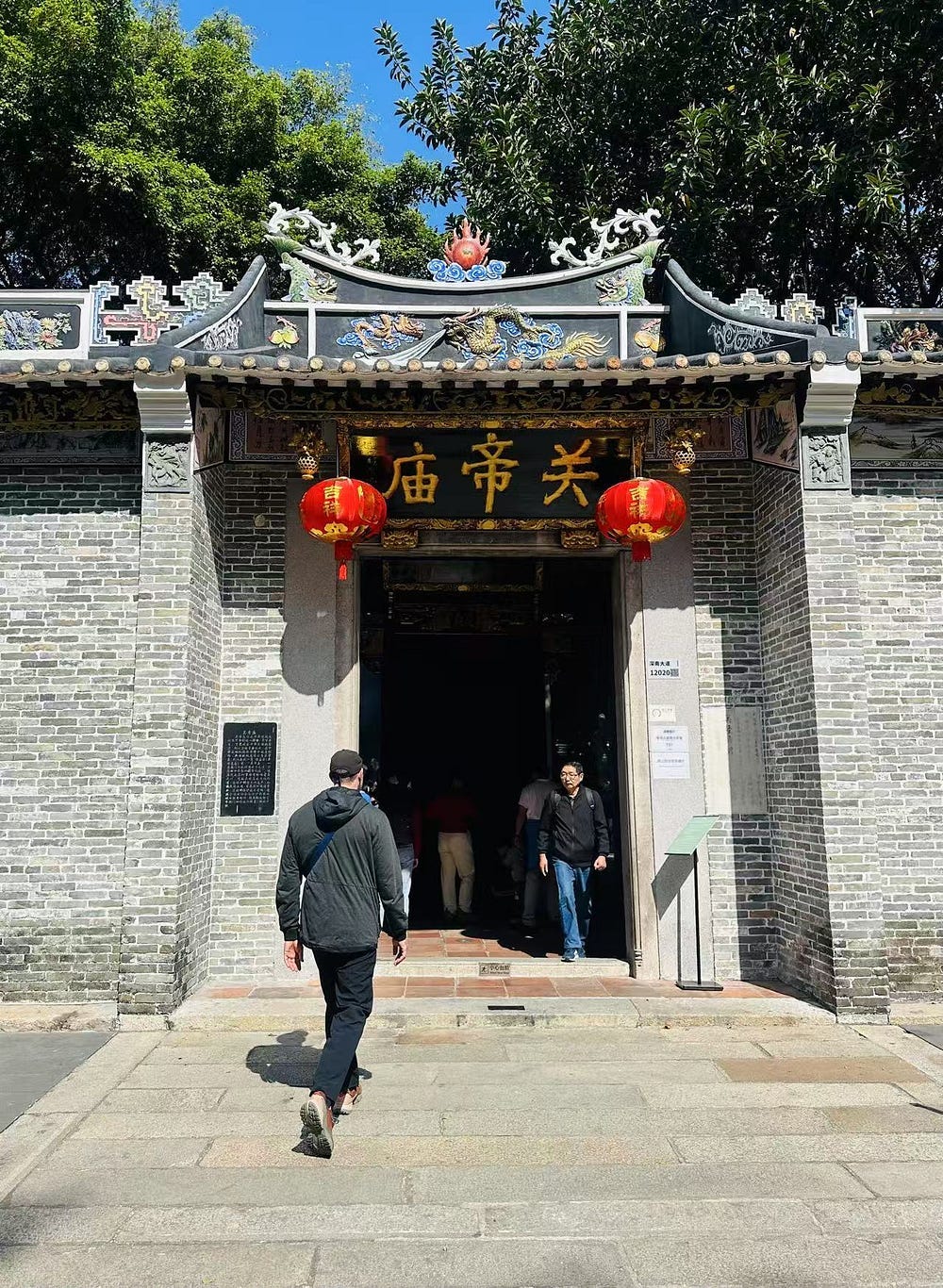

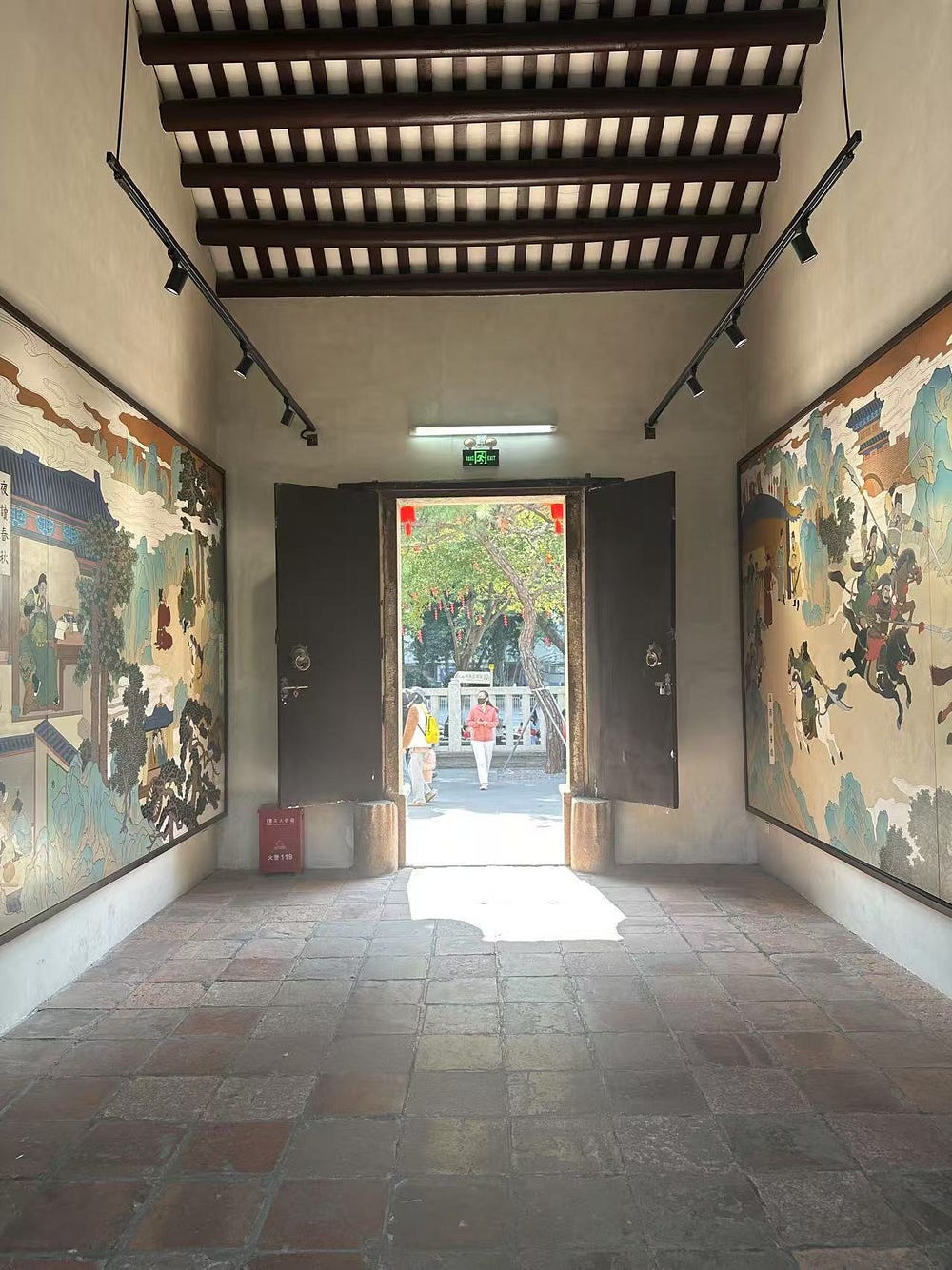
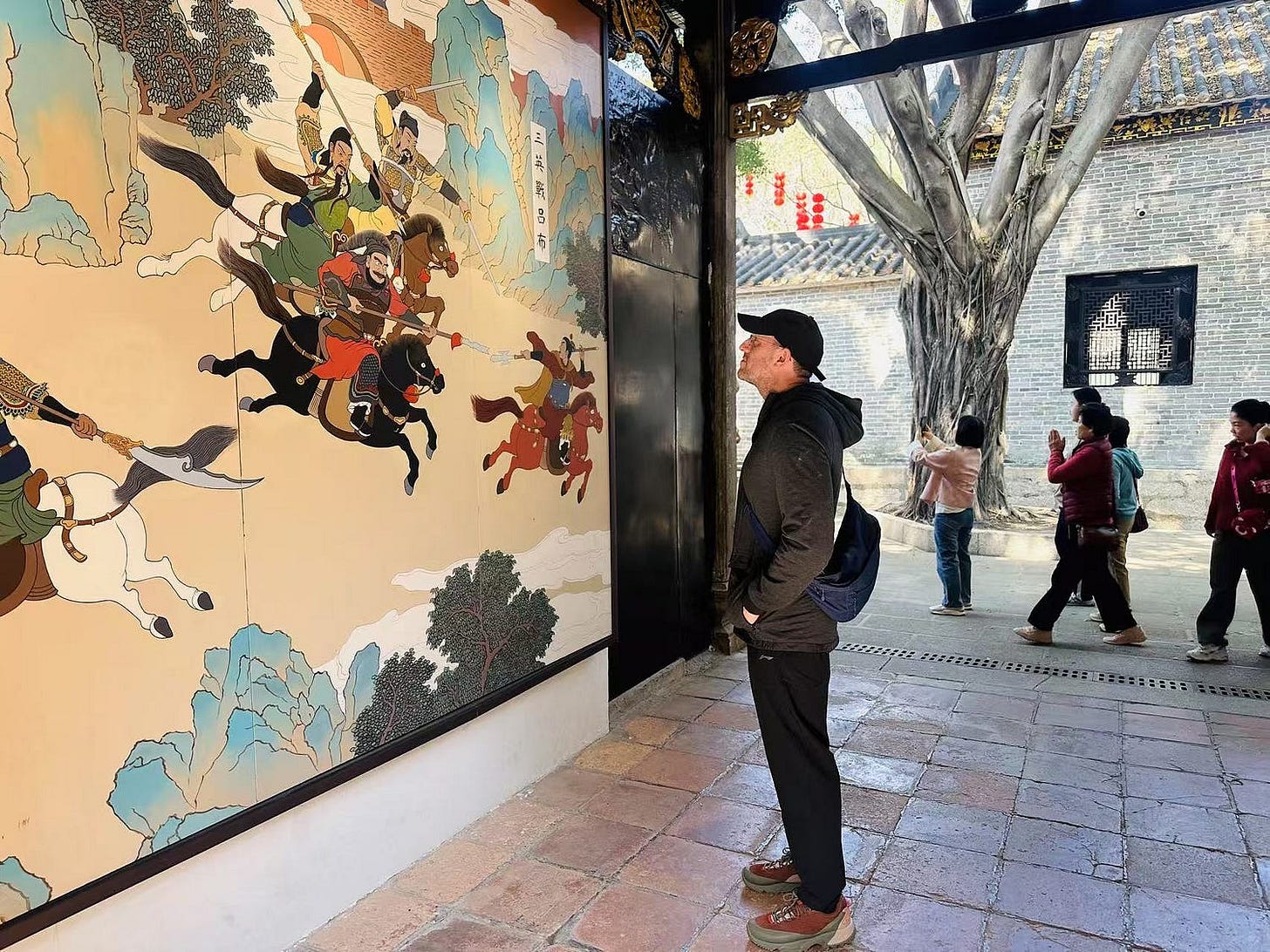

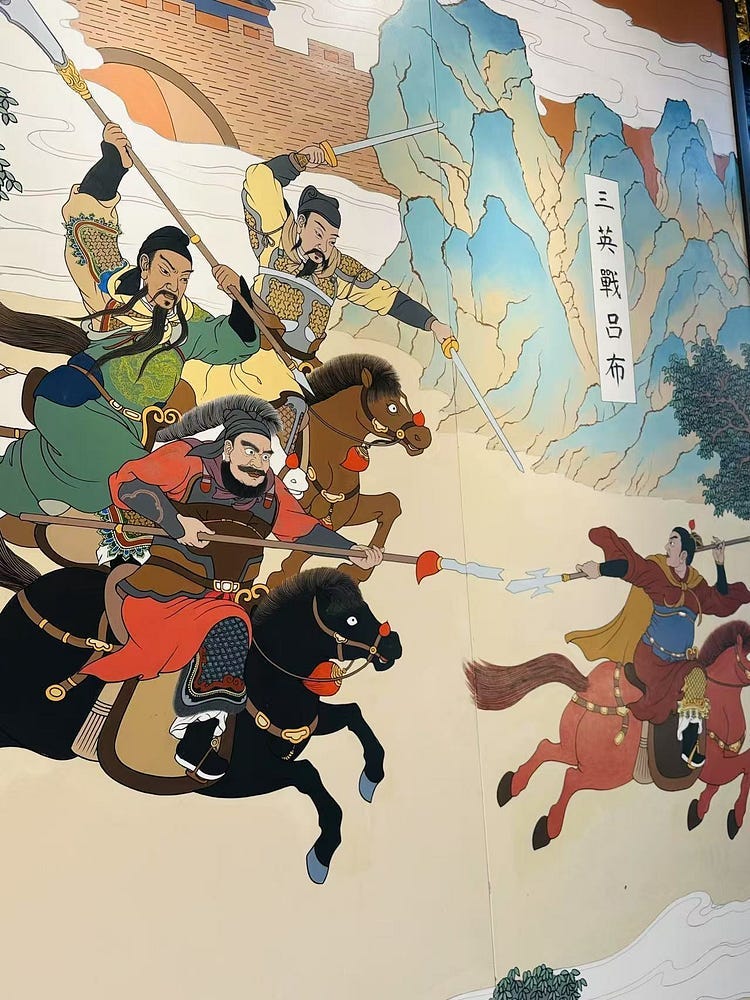

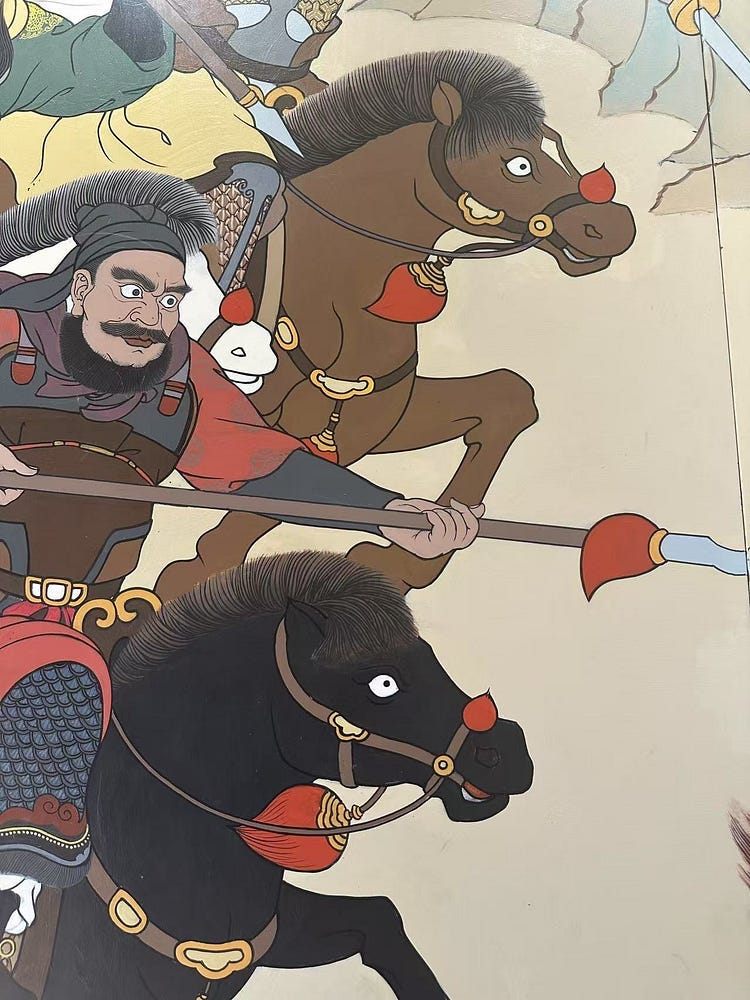
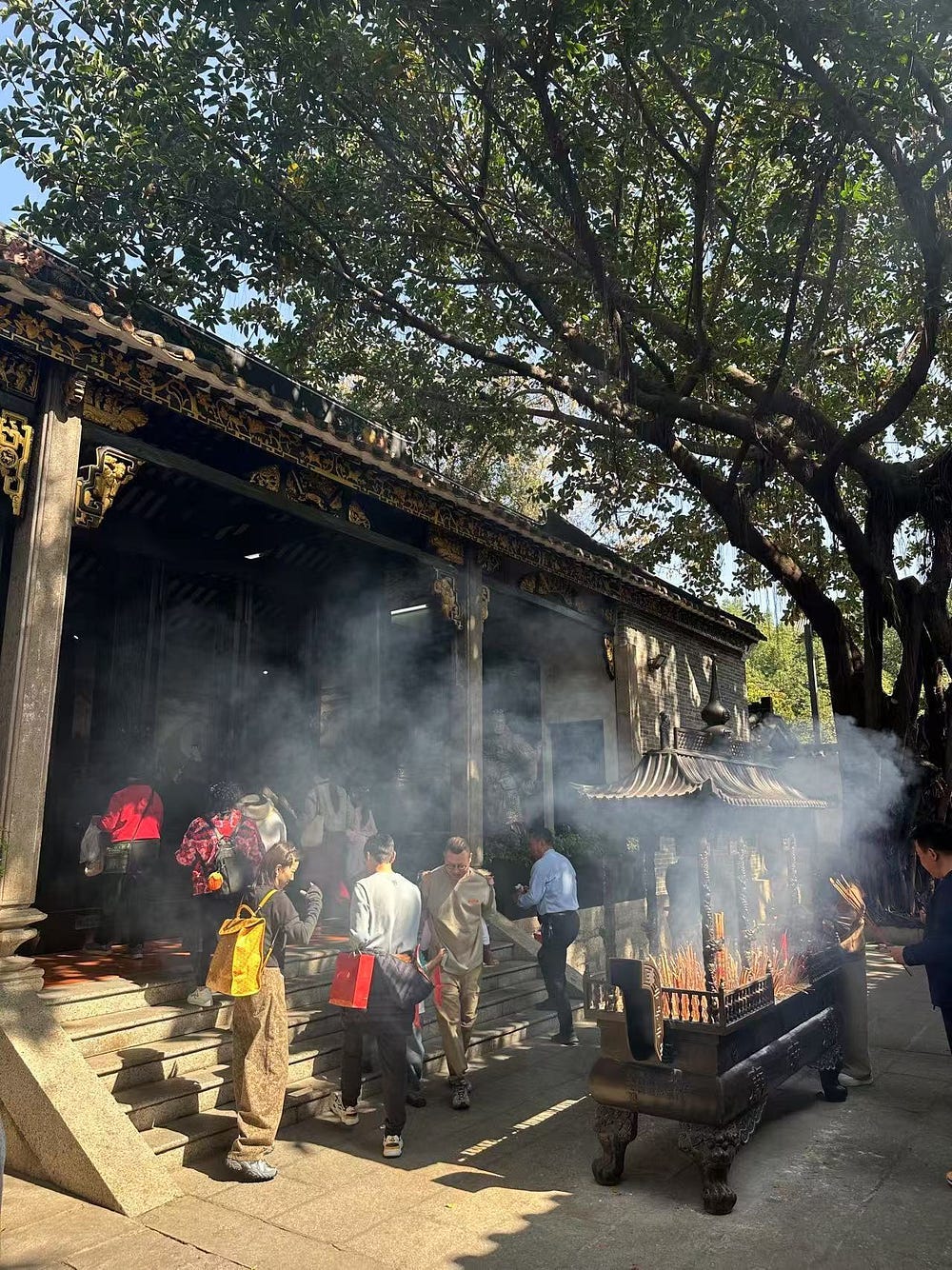





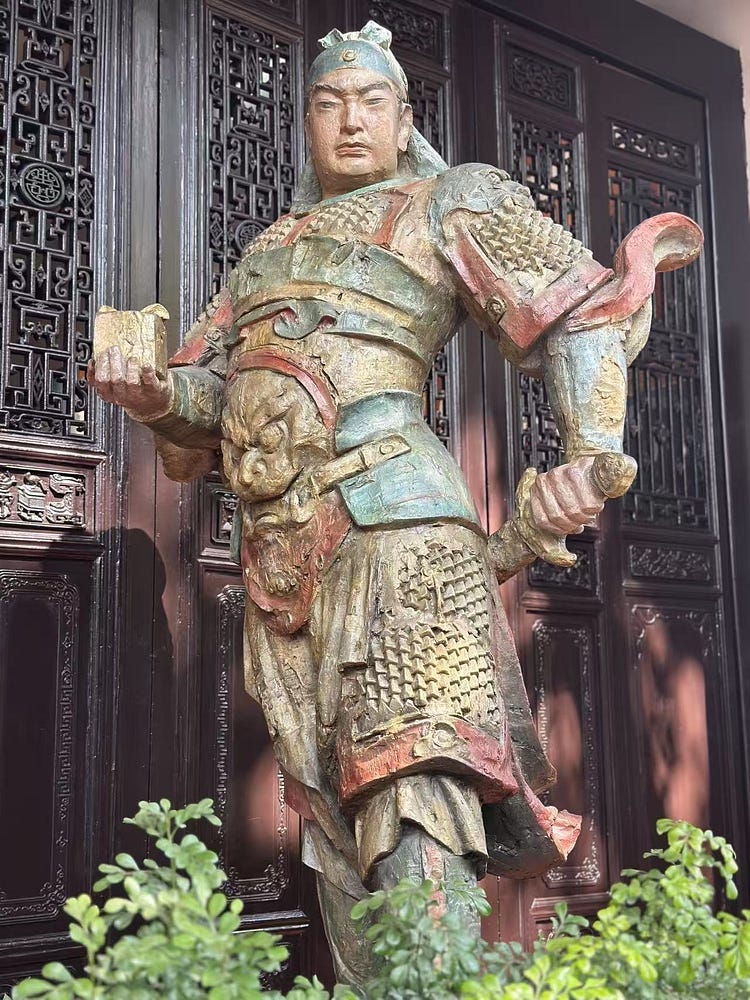

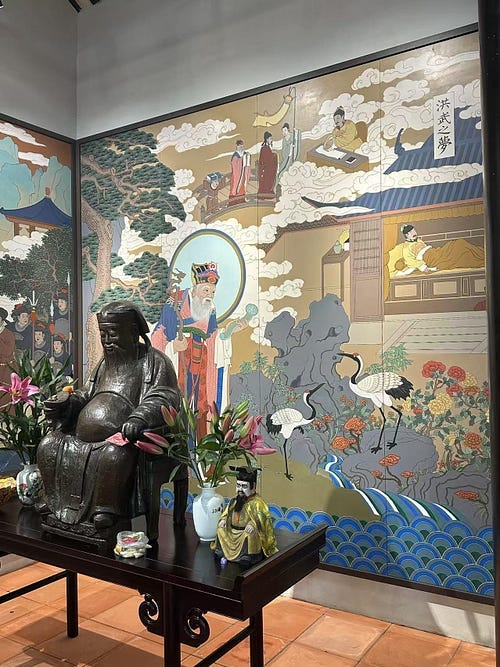




Cool looking temple, it is interesting how although guanyu is a character in history he is praised and worshipped as a god of sorts for wealth and prosperity.
This was an interesting read! Can't wait to hear stories about the other two brothers!